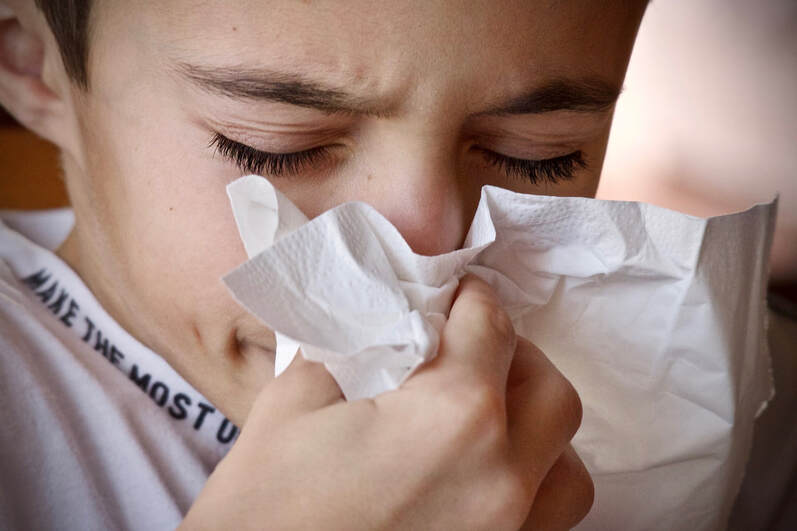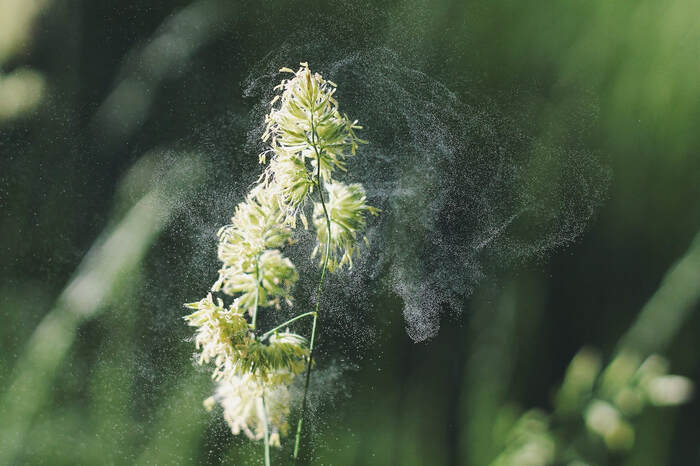Seasonal Allergies on the Rise: Could Climate Change
Be Responsible?
The various widespread impacts of climate change have many unknown consequences that are now becoming recognized and understood. The cascade of impacts from one great change can perpetuate to a smaller web of interconnected changes on ecosystems, sociopolitical systems, and public health, meaning that these consequences can often come from unexpected places. One such unexpected consequence of climate change may be worsened seasonal allergies.
Large scale ecological changes have led to changes in plant phenology, or the timing of the onset of spring flowering. Because the timing of flowering is sensitive to temperature, places that have seen the most extensive warming, such as the northern states of the U.S. and Canada, have observed the most shifts in the start of the greening season. Earlier or later spring seasons may correlate with changes in pollen dynamics or changes in how long pollen exposure continues — in this case, at its peak annual levels. Locations with earlier spring onset have longer durations of pollen exposure. With significant changes in plant phenology in the last decade, more and more areas are seeing abnormally early or late spring seasons. As a result, a longer spring may cause more severe and prolonged seasonal allergies, or allergic rhinitis.
Although allergic rhinitis may seem like a minor health hindrance, severe seasonal allergies can actually keep those who are especially vulnerable indoors. Additionally, more than 25 million Americans are impacted, and allergic rhinitis costs an estimated $11.2 billion per year to the U.S. economy alone. It is important to analyze the factors that influence seasonal allergies in order to help reduce this cost and recognize how global ecological changes can impact individual lives. An earlier or later spring season threatens both vulnerable habitats and human health.
Large scale ecological changes have led to changes in plant phenology, or the timing of the onset of spring flowering. Because the timing of flowering is sensitive to temperature, places that have seen the most extensive warming, such as the northern states of the U.S. and Canada, have observed the most shifts in the start of the greening season. Earlier or later spring seasons may correlate with changes in pollen dynamics or changes in how long pollen exposure continues — in this case, at its peak annual levels. Locations with earlier spring onset have longer durations of pollen exposure. With significant changes in plant phenology in the last decade, more and more areas are seeing abnormally early or late spring seasons. As a result, a longer spring may cause more severe and prolonged seasonal allergies, or allergic rhinitis.
Although allergic rhinitis may seem like a minor health hindrance, severe seasonal allergies can actually keep those who are especially vulnerable indoors. Additionally, more than 25 million Americans are impacted, and allergic rhinitis costs an estimated $11.2 billion per year to the U.S. economy alone. It is important to analyze the factors that influence seasonal allergies in order to help reduce this cost and recognize how global ecological changes can impact individual lives. An earlier or later spring season threatens both vulnerable habitats and human health.
Image Source: Free-Photos / 9093 images
Researchers at the Maryland Institute for Applied Environmental Health collected satellite data on plant phenology in North America and information from a national health survey in order to assess the impact of climate change on seasonal allergies. This was the first study of its kind to analyze this topic on a national scale. The study found that both locations with very early greening onset (> three weeks earlier than the long-term (13-year) average) and locations with very late greening onset (< three weeks later than long-term average) had the highest increases in odds of experiencing allergic rhinitis. The early onset locations had an average of 13% increased odds of experiencing seasonal allergies and the late onset locations had an average of 14% increased odds. (Greening onset is specified because 18% of the locations studied see greening outside of the spring.) When greening onset is controlled to places that experience greening at the beginning of spring, the impact of very late greening were slightly stronger.
From this study, it was concluded that the longer duration of pollen exposure due to early onset of greening resulted in a worsened allergy season. The late onset greening is particularly interesting, because the later greening means that more plants are flowering at the same time than when the greening or spring season is a normal duration. It is suspected that this increase in concurrent flowering increases the severity of allergic rhinitis due to a higher pollen count concentrated to a shorter period of time. The researchers concluded that there is a definitive link between plant phenology and allergic rhinitis perturbed by climate change.
From this study, it was concluded that the longer duration of pollen exposure due to early onset of greening resulted in a worsened allergy season. The late onset greening is particularly interesting, because the later greening means that more plants are flowering at the same time than when the greening or spring season is a normal duration. It is suspected that this increase in concurrent flowering increases the severity of allergic rhinitis due to a higher pollen count concentrated to a shorter period of time. The researchers concluded that there is a definitive link between plant phenology and allergic rhinitis perturbed by climate change.
Featured Image Source: sweetlouise
RELATED ARTICLES
|
Vertical Divider
|
Vertical Divider
|
Vertical Divider
|






